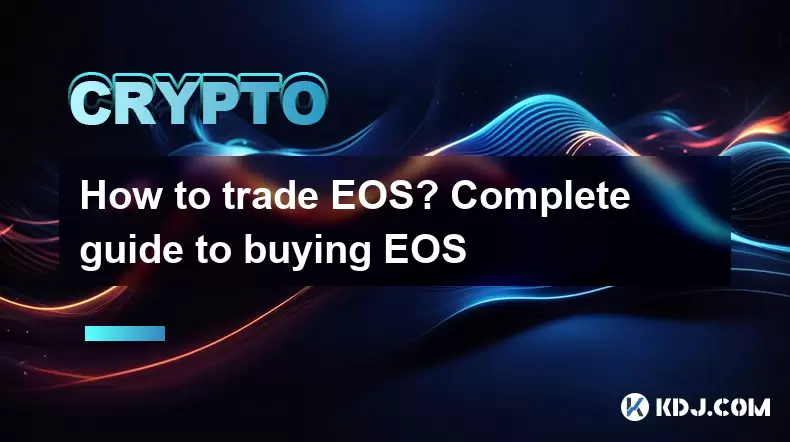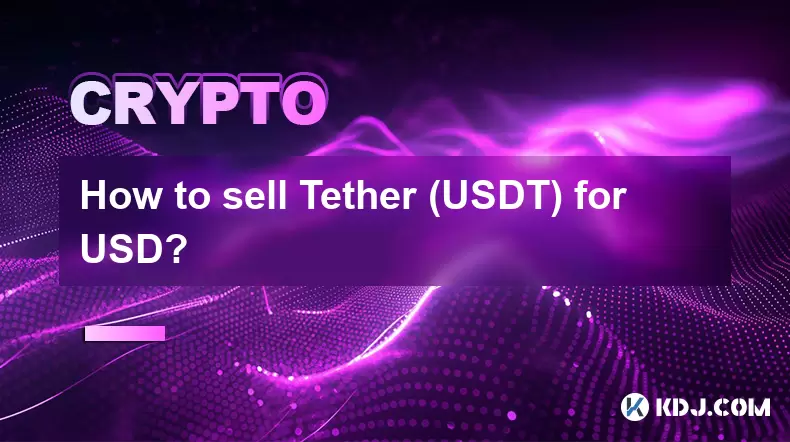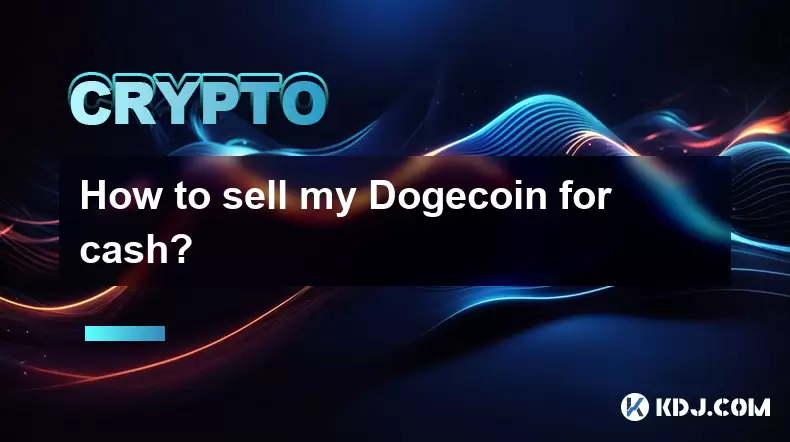-
 Bitcoin
Bitcoin $115100
1.27% -
 Ethereum
Ethereum $3675
2.71% -
 XRP
XRP $2.995
1.45% -
 Tether USDt
Tether USDt $1.000
0.02% -
 BNB
BNB $769.8
2.64% -
 Solana
Solana $168.0
3.25% -
 USDC
USDC $0.9999
-0.01% -
 TRON
TRON $0.3371
1.48% -
 Dogecoin
Dogecoin $0.2051
3.36% -
 Cardano
Cardano $0.7394
2.30% -
 Hyperliquid
Hyperliquid $38.15
0.42% -
 Stellar
Stellar $0.3966
-0.36% -
 Sui
Sui $3.486
2.93% -
 Chainlink
Chainlink $16.72
2.52% -
 Bitcoin Cash
Bitcoin Cash $568.0
4.36% -
 Hedera
Hedera $0.2440
2.59% -
 Ethena USDe
Ethena USDe $1.001
0.04% -
 Avalanche
Avalanche $22.16
2.06% -
 Litecoin
Litecoin $119.1
-0.73% -
 UNUS SED LEO
UNUS SED LEO $8.991
0.04% -
 Toncoin
Toncoin $3.232
-0.39% -
 Shiba Inu
Shiba Inu $0.00001233
2.82% -
 Uniswap
Uniswap $9.717
2.53% -
 Polkadot
Polkadot $3.664
1.85% -
 Dai
Dai $1.000
0.01% -
 Monero
Monero $281.2
-3.89% -
 Bitget Token
Bitget Token $4.350
1.55% -
 Cronos
Cronos $0.1428
5.07% -
 Pepe
Pepe $0.00001050
3.68% -
 Aave
Aave $262.3
3.54%
How to trade EOS? Complete guide to buying EOS
Trading EOS involves choosing a reputable exchange, setting up a secure account, buying EOS, and using strategies like day trading or HODLing to manage your investments effectively.
Jun 05, 2025 at 09:56 am

Trading EOS can be an exciting venture for anyone interested in the world of cryptocurrencies. EOS is a blockchain platform designed to support industrial-scale decentralized applications, and trading it involves understanding its market dynamics and the various platforms where it can be traded. This guide will walk you through the complete process of buying EOS, from setting up your account to executing your first trade.
Choosing a Cryptocurrency Exchange
To trade EOS, you first need to select a reputable cryptocurrency exchange that supports EOS trading. Some of the most popular exchanges for EOS include Binance, Kraken, and Coinbase Pro. Each of these platforms has its own set of features, fees, and user interfaces, so it's important to choose one that aligns with your trading needs.
- Binance is known for its extensive range of trading pairs and low fees, making it a popular choice among traders.
- Kraken offers robust security features and a user-friendly interface, appealing to both beginners and experienced traders.
- Coinbase Pro is favored for its ease of use and integration with other Coinbase services, making it a good option for those new to trading.
Once you have chosen an exchange, you will need to create an account. This typically involves providing your email address, creating a strong password, and completing a verification process that may require submitting personal identification documents.
Setting Up Your Account
After selecting an exchange and creating an account, you'll need to set up your trading environment. This includes enabling two-factor authentication (2FA) for added security and depositing funds into your account.
- Enable 2FA by downloading an authentication app like Google Authenticator or Authy. Follow the exchange's instructions to link your account to the app, which will generate a unique code each time you log in.
- Deposit funds into your account by navigating to the deposit section of the exchange. You can usually deposit using bank transfers, credit/debit cards, or other cryptocurrencies. Follow the on-screen instructions to complete your deposit.
Once your account is funded, you can proceed to the trading section of the exchange to buy EOS.
Buying EOS
To buy EOS, you'll need to navigate to the trading section of the exchange and select the EOS trading pair that suits your needs. Common trading pairs for EOS include EOS/USDT, EOS/BTC, and EOS/ETH.
- Choose your trading pair by selecting it from the list of available pairs. For beginners, trading against a stablecoin like USDT can be less volatile and easier to understand.
- Place an order to buy EOS. You can choose between a market order, which executes immediately at the current market price, or a limit order, which allows you to set a specific price at which you want to buy. For example, if you want to buy 100 EOS at a price of $3.50 each, you would set a limit order for 100 EOS at $3.50.
- Review and confirm your order. Double-check the details, including the amount of EOS you are buying and the total cost, before confirming the order.
Once your order is filled, the EOS will appear in your exchange wallet, ready for trading or withdrawal.
Storing EOS Safely
While keeping your EOS on an exchange can be convenient for trading, it's generally safer to store your EOS in a personal wallet. There are several types of wallets you can use, each with its own security features and ease of use.
- Hardware wallets, like Ledger or Trezor, offer the highest level of security by storing your EOS offline. To use a hardware wallet, you'll need to set it up by following the manufacturer's instructions, which typically involve generating a seed phrase and connecting the wallet to your computer.
- Software wallets, such as Exodus or Atomic Wallet, are applications that you download onto your computer or smartphone. These wallets are easier to use but may be less secure than hardware wallets.
- Web wallets, like those offered by some exchanges, are the most convenient but also the least secure option. If you choose to use a web wallet, make sure it's from a reputable provider and enable all available security features.
To transfer your EOS from the exchange to your personal wallet, navigate to the withdrawal section of the exchange, enter your wallet address, and specify the amount of EOS you want to transfer. Double-check the wallet address to avoid sending your EOS to the wrong place.
Trading Strategies for EOS
Once you have EOS in your wallet or on an exchange, you can start trading. There are several strategies you can use to trade EOS, depending on your risk tolerance and investment goals.
- Day trading involves buying and selling EOS within the same day to take advantage of short-term price movements. This strategy requires constant monitoring of the market and a good understanding of technical analysis.
- Swing trading is a strategy that involves holding EOS for several days or weeks to capitalize on medium-term price swings. This approach requires less time commitment than day trading but still involves active monitoring and analysis.
- HODLing is a long-term strategy where you buy EOS and hold onto it for an extended period, regardless of short-term price fluctuations. This strategy is based on the belief that the value of EOS will increase over time.
Each of these strategies has its own set of risks and rewards, so it's important to choose one that aligns with your investment goals and risk tolerance.
Monitoring and Managing Your EOS Trades
Once you've started trading EOS, it's crucial to monitor your trades and manage your portfolio effectively. Most exchanges offer tools and features to help you track your trades and analyze market trends.
- Use the exchange's trading charts to monitor the price of EOS and identify potential trading opportunities. Most exchanges offer a variety of chart types and technical indicators to help you analyze the market.
- Set stop-loss orders to limit your potential losses. A stop-loss order automatically sells your EOS if the price drops to a certain level, helping you manage risk.
- Diversify your portfolio by trading other cryptocurrencies alongside EOS. This can help spread your risk and potentially increase your returns.
By staying informed about market trends and managing your trades effectively, you can maximize your chances of success when trading EOS.
Frequently Asked Questions
Q: Can I trade EOS on decentralized exchanges (DEXs)?
A: Yes, you can trade EOS on decentralized exchanges like Uniswap or SushiSwap. DEXs operate on blockchain technology and allow you to trade directly with other users without the need for a centralized intermediary. To trade EOS on a DEX, you'll need to connect a compatible wallet, such as MetaMask, and swap your EOS for other tokens.
Q: Are there any fees associated with trading EOS?
A: Yes, trading EOS typically involves several types of fees. Exchanges charge trading fees, which can be a percentage of the transaction amount or a flat fee per trade. Withdrawal fees are also common when transferring EOS from an exchange to a personal wallet. Additionally, some wallets may charge network fees for processing transactions on the EOS blockchain.
Q: How can I stay updated on EOS market trends?
A: To stay updated on EOS market trends, you can use several resources. Cryptocurrency news websites like CoinDesk and CoinTelegraph provide up-to-date information on market movements and industry developments. Social media platforms like Twitter and Reddit are also valuable for real-time insights and community discussions. Additionally, many exchanges offer market analysis tools and newsletters to help you stay informed.
Q: Can I earn passive income with EOS?
A: Yes, there are several ways to earn passive income with EOS. One common method is staking, where you lock up your EOS to support the network's operations and earn rewards in return. Another option is lending your EOS on decentralized finance (DeFi) platforms, which can provide interest payments over time. Always research and understand the risks associated with these methods before participating.
Disclaimer:info@kdj.com
The information provided is not trading advice. kdj.com does not assume any responsibility for any investments made based on the information provided in this article. Cryptocurrencies are highly volatile and it is highly recommended that you invest with caution after thorough research!
If you believe that the content used on this website infringes your copyright, please contact us immediately (info@kdj.com) and we will delete it promptly.
- HashFlare Founders Face the Music: Jail Time Looms?
- 2025-08-07 14:30:12
- Pepeto's Pounce: Meme Coin Mania Meets Blockchain Infrastructure
- 2025-08-07 15:10:12
- Parataxis, SPAC Merger, and Bitcoin Treasury: A New York Minute on Crypto's Latest Moves
- 2025-08-07 15:30:12
- Toshi on Binance.US: A Memecoin's Big Break
- 2025-08-07 14:30:12
- Bitcoin, SPAC Mergers, and Parataxis: A New Yorker's Take on Crypto's Wall Street Moment
- 2025-08-07 14:50:27
- Bitcoin, Collateral, and Loan Strategies: A New York Minute on the Future of Finance
- 2025-08-07 14:50:27
Related knowledge

How to sell Tether (USDT) for USD?
Aug 07,2025 at 03:29pm
Understanding Tether (USDT) and Its USD ValueTether (USDT) is a stablecoin designed to maintain a 1:1 value ratio with the United States Dollar (USD)....

How to sell my Bitcoincoin for cash?
Aug 07,2025 at 02:14pm
Understanding the Basics of Selling Dogecoin for CashSelling Dogecoin for cash involves converting your DOGE tokens into a fiat currency such as USD, ...

What is Chainlink (LINK)?
Jul 22,2025 at 02:14am
Understanding Chainlink (LINK): The Decentralized Oracle NetworkChainlink is a decentralized oracle network designed to bridge the gap between blockch...

What is Avalanche (AVAX)?
Jul 22,2025 at 08:35am
What is Avalanche (AVAX)?Avalanche (AVAX) is a decentralized, open-source blockchain platform designed to support high-performance decentralized appli...

What is Polkadot (DOT)?
Jul 19,2025 at 06:35pm
Understanding the Basics of Polkadot (DOT)Polkadot (DOT) is a multi-chain network protocol designed to enable different blockchains to transfer messag...

What is Litecoin (LTC)?
Jul 23,2025 at 11:35am
Overview of Litecoin (LTC)Litecoin (LTC) is a peer-to-peer cryptocurrency that was created in 2011 by Charlie Lee, a former Google engineer. It is oft...

How to sell Tether (USDT) for USD?
Aug 07,2025 at 03:29pm
Understanding Tether (USDT) and Its USD ValueTether (USDT) is a stablecoin designed to maintain a 1:1 value ratio with the United States Dollar (USD)....

How to sell my Bitcoincoin for cash?
Aug 07,2025 at 02:14pm
Understanding the Basics of Selling Dogecoin for CashSelling Dogecoin for cash involves converting your DOGE tokens into a fiat currency such as USD, ...

What is Chainlink (LINK)?
Jul 22,2025 at 02:14am
Understanding Chainlink (LINK): The Decentralized Oracle NetworkChainlink is a decentralized oracle network designed to bridge the gap between blockch...

What is Avalanche (AVAX)?
Jul 22,2025 at 08:35am
What is Avalanche (AVAX)?Avalanche (AVAX) is a decentralized, open-source blockchain platform designed to support high-performance decentralized appli...

What is Polkadot (DOT)?
Jul 19,2025 at 06:35pm
Understanding the Basics of Polkadot (DOT)Polkadot (DOT) is a multi-chain network protocol designed to enable different blockchains to transfer messag...

What is Litecoin (LTC)?
Jul 23,2025 at 11:35am
Overview of Litecoin (LTC)Litecoin (LTC) is a peer-to-peer cryptocurrency that was created in 2011 by Charlie Lee, a former Google engineer. It is oft...
See all articles

























































































